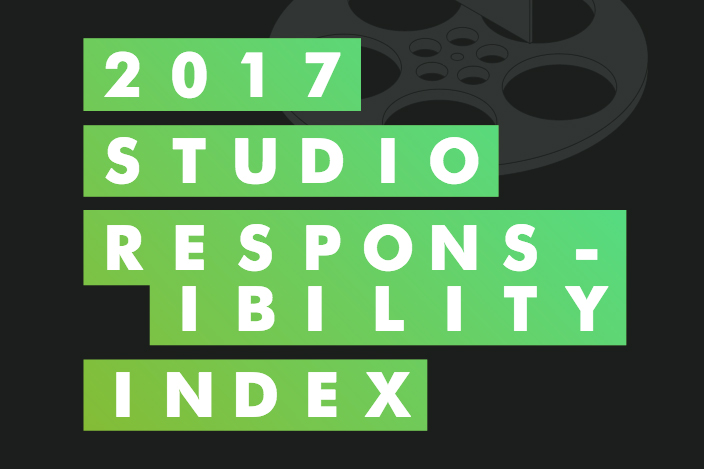
GLAAD—the nation’s largest LGBTQ media watchdog organization—released its annual Studio Responsibility Index, and as in previous years, reports that queer characters remain vastly underrepresented in major studio films and television shows—with Hollywood ranking as the worst offender.
The 2017 GLAAD Studio Responsibility Index (SRI), which the organization has coordinated annually for five years, maps the quantity, quality and diversity of lesbian, gay, bisexual, transgender, and queer people in films released by the seven major motion picture studios during the 2016 calendar year. GLAAD researched films released by 20th Century Fox, Lionsgate Entertainment, Paramount Pictures, Sony Pictures, Universal Pictures, Walt Disney Studios and Warner Brothers, as well as films released by four subsidiaries of these major studios. The report is intended to serve as a road map toward increasing fair, accurate and inclusive LGBTQ representation in film.
“Looking back at five years of the Studio Responsibility Index (SRI), there remains very little consistency in representation of LGBTQ characters. This inconsistency is seen in the year-to-year data as studios drop several grades, as well as within the studios’ yearly lineup in which a single studio will release both standout inclusive films alongside more problematic portrayals,” said GLAAD President and CEO Sarah Ellis. “We continue to see many of the same problems repeatedly. This includes LGBTQ characters who lack substance and are often treated only as a punchline, a dangerous message which keeps old prejudices alive both here in the U.S. and around the world where these films are distributed. Hollywood must do better to question what they are really communicating to audiences.”
After reviewing 125 major motion pictures produced in 2016, GLAAD found that only 23 of them featured LGBTQ roles. Although the advocacy group found a one percent increase in queer parts, the majority of them were minor roles that generally perpetuated discriminatory stereotypes, which continue to plague the LGBTQ community and how it’s perceived and presented by media. The SRI mainly focused on films and film studios, noting that television is still doing a much better job at giving the community the respectful and accurate visibility it deserves in shows’ plots.
GLAAD’s report did highlight the unequivocally positive fact that “Moonlight,” from the independent studio A24, made history this year as the first film starring an LGBTQ character in a leading role to win the Academy Award for Best Picture.
“Films like Moonlight prove there is a huge opportunity to not only tell LGBTQ stories worthy of Oscar gold, but to open the hearts and minds of audiences here and around the world in places where these stories can be a lifeline to the people who need it most,” Ellis continued.
The SRI also pointed out other examples of progress in film, including Disney’s blockbuster live action release “Beauty and the Beast”‘s featuring of a “canonically gay character,” LeFou, whose “happy ending may have been a small moment, but it was a huge step forward for the industry.” Additionally, Lionsgate’s “Power Rangers” movie incorporated a story arc surrounding the Yellow Ranger, Trini’s, ponderance of her sexual orientation, something with which many teens and adolescents can identify.
Yet, nearly half of the inclusive films released by the seven major studios included less than one minute of screen time for their LGBTQ characters. The sole transgender character put forth by the studios and productions studied was, in essence, presented as a “cartoonish” joke in very poor taste (to say the least) in the movie “Zoolander 2.” And the overall percentage of LGBTQ characters of color dipped from nearly 26 percent in 2015 to 20 percent in 2016.
83 percent of queer characters in the film sources mined for data were gay men, making that group the most visible faction of the community. Lesbian roles followed by clocking in at 35 percent and bisexual ones at 13 percent, while transgender characters were—inexcusably and shockingly—close to nonexistent in this year’s SRI findings.
GLAAD’s Ellis called on the film industry to follow television’s lead in creating more inclusive content and multi-layered roles that reflect the enormous diversity of the LGBTQ community as it exists today.
“With many of the most popular TV shows proudly including LGBTQ characters and stories, the time has come for the film industry to step up and show the full diversity of the world that movie audiences are living in today instead and end the outdated humor seen in many films,” Ellis concluded.
This year, GLAAD introduced a new grading system that “holds the studios to a higher standard to reflect the quality and quantity of LGBTQ representation we are seeing in other forms of entertainment media. On the new five-grade scale, three studios received “Poor” ratings for their 2016 slates [20th Century Fox, Paramount, Warner Brothers] and three others received “Failing” ratings [Lionsgate, Sony Pictures, Walt Disney Studios]. Universal Pictures is the only studio to be rated “Insufficient.” No studios were rated “Good” this year, and none have ever received an “Excellent” rating. Mainstream film continues to lag far behind TV and other forms of media when it comes to LGBTQ representation,” GLAAD reported.
Read the full report here.

What Do You Think?